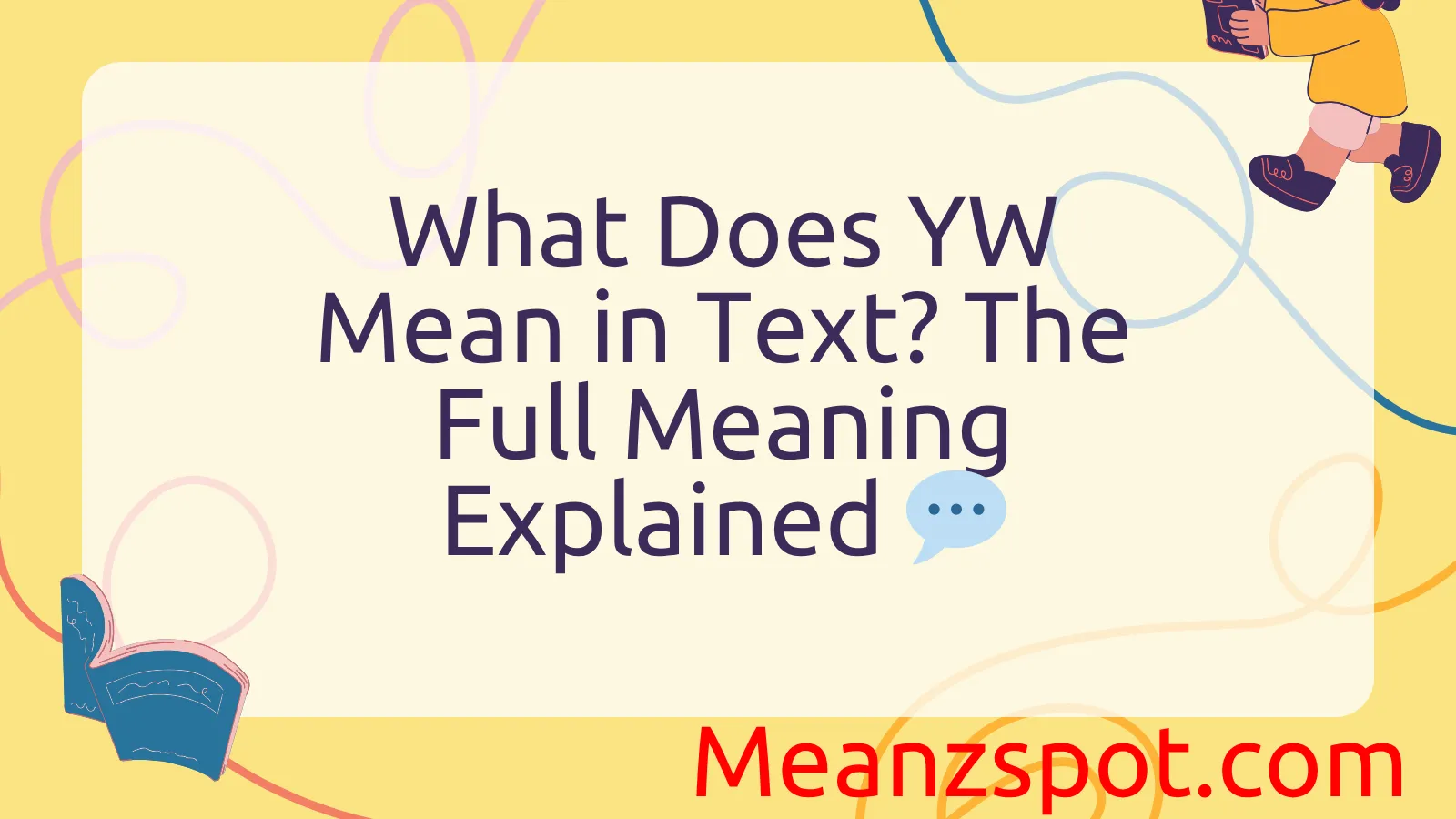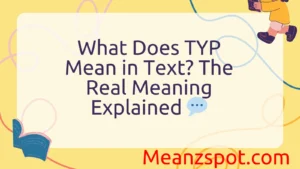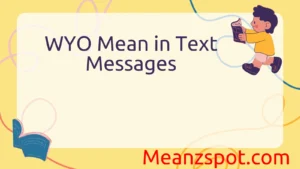In the fast-paced world of texting and online chatting, abbreviations and slang have become part of everyday communication. One such abbreviation that often pops up is YW. If you’ve ever seen someone reply with “YW” and wondered what it actually means, you’re not alone. This simple two-letter text can save time, but understanding its context is key.
In this article, we’ll explore the meaning of YW, how it’s used in conversations, and why knowing these modern abbreviations can help you communicate more effectively online. Whether you’re texting friends, messaging on social media, or participating in group chats, getting familiar with terms like YW will make your digital conversations smoother and more enjoyable.
Definitions & Meaning
“YW” is an abbreviation commonly used in text messaging, online chats, and social media. It stands for “You’re Welcome.” This phrase is a polite response when someone thanks you for a favor, help, or any act of kindness.
For example:
- Person A: “Thanks for helping me with my homework!”
- Person B: “YW!”
Using “YW” is a quick, casual way to acknowledge gratitude without typing out the full phrase. It helps maintain the flow of conversation, especially when chatting on mobile devices where brevity is valued.
The meaning is straightforward, but its tone can vary depending on the context. Sometimes, it’s warm and sincere; other times, it may feel a bit curt or neutral, depending on the relationship between the people texting.
Origins & History
The use of acronyms like “YW” traces back to the rise of digital communication in the late 1990s and early 2000s. Early instant messaging platforms like AOL Instant Messenger (AIM), MSN Messenger, and texting via cell phones pushed people to type faster and shorten common phrases.
Abbreviations such as “LOL” (laugh out loud), “BRB” (be right back), and “YW” (you’re welcome) became widespread. “YW” emerged as a natural counterpart to “THX” or “TY” (thanks/thank you), forming part of the basic etiquette in digital conversations.
While originally popular in informal settings, the use of “YW” has crossed into professional environments where informal chat tools like Slack or Microsoft Teams encourage quick, friendly exchanges.
Usage in Different Contexts
Social Media and Text Messaging
On platforms like Instagram, Twitter, WhatsApp, and Snapchat, “YW” is a common way to reply quickly to a thank-you message. It fits well with the casual, conversational tone typical on these platforms.
Example:
- Friend: “Thanks for the invite!”
- You: “YW 😊”
Professional and Work Chats
In work-related chats, such as Slack or Microsoft Teams, “YW” can be used to acknowledge thanks casually but efficiently. However, tone is important here — some people might prefer the full “You’re welcome” or a more formal response to maintain professionalism.
Example:
- Colleague: “Thanks for covering the meeting.”
- You: “YW! Let me know if you need anything else.”
Pop Culture and Media
Sometimes, “YW” appears in TV shows, movies, or memes to portray authentic texting habits. It signals how modern communication is brief and often coded with abbreviations.
Common Misunderstandings & Clarifications
- Is “YW” rude or dismissive?
Not necessarily. The tone depends on context and the relationship between speakers. While “YW” is brief, it usually isn’t meant to be rude. If unsure, a longer reply may be better. - Is “YW” only for texting?
Mostly yes, but it can appear in emails, comments, or even casual speech as a verbal shorthand. - Does “YW” have other meanings?
In some rare cases, “YW” can mean “Yes, Why?” or represent initials, but these are uncommon in general texting. - Is it appropriate for professional emails?
Typically, no. More formal phrases like “You’re welcome” or “My pleasure” are preferred in formal written communication.
Alternatives & Synonyms
If you want to mix things up or sound more formal or friendly, here are some alternatives to “YW”:
- You’re welcome
- No problem
- Don’t mention it
- My pleasure
- Anytime
- Sure thing
- Happy to help
Each alternative can convey a slightly different tone — from very casual to polite and professional. Choosing the right one depends on the context and your relationship with the person.
Frequently Asked Questions (FAQ)
Q1: Can I use “YW” in a professional email?
A: It’s best to avoid abbreviations like “YW” in professional emails. Use full phrases such as “You’re welcome” or “Glad to help.”
Q2: Is “YW” the same as “NP” (No Problem)?
A: Both express a similar sentiment, but “YW” literally means “You’re welcome,” while “NP” suggests the help was no trouble.
Q3: How do I respond if someone says “YW” to me?
A: Typically, no response is needed, but you could reply with another polite phrase or continue the conversation.
Q4: Are abbreviations like “YW” universal?
A: Mostly in English-speaking communities, but texting slang varies widely across languages and cultures.
Q5: Can “YW” be used sarcastically?
A: Yes, like many abbreviations, tone can change meaning. Sarcasm is usually clear from context.
Q6: Is “YW” used in voice assistants or smart devices?
A: Not typically. Voice assistants use full phrases for clarity.
Conclusion
Understanding abbreviations like “YW” is essential for navigating modern digital communication. It’s a quick, simple way to say “You’re welcome” and keeps conversations flowing smoothly, especially in informal texting or social media chats. While it’s perfect for casual use, remember that context matters — in professional settings, a full, polite response is usually better.
Knowing when and how to use “YW” helps you communicate efficiently and appropriately in different scenarios. As texting slang continues to evolve, being fluent in these acronyms keeps you connected and in the know. So next time someone thanks you in a text, you’ll be ready to reply with a quick and friendly “YW!”



